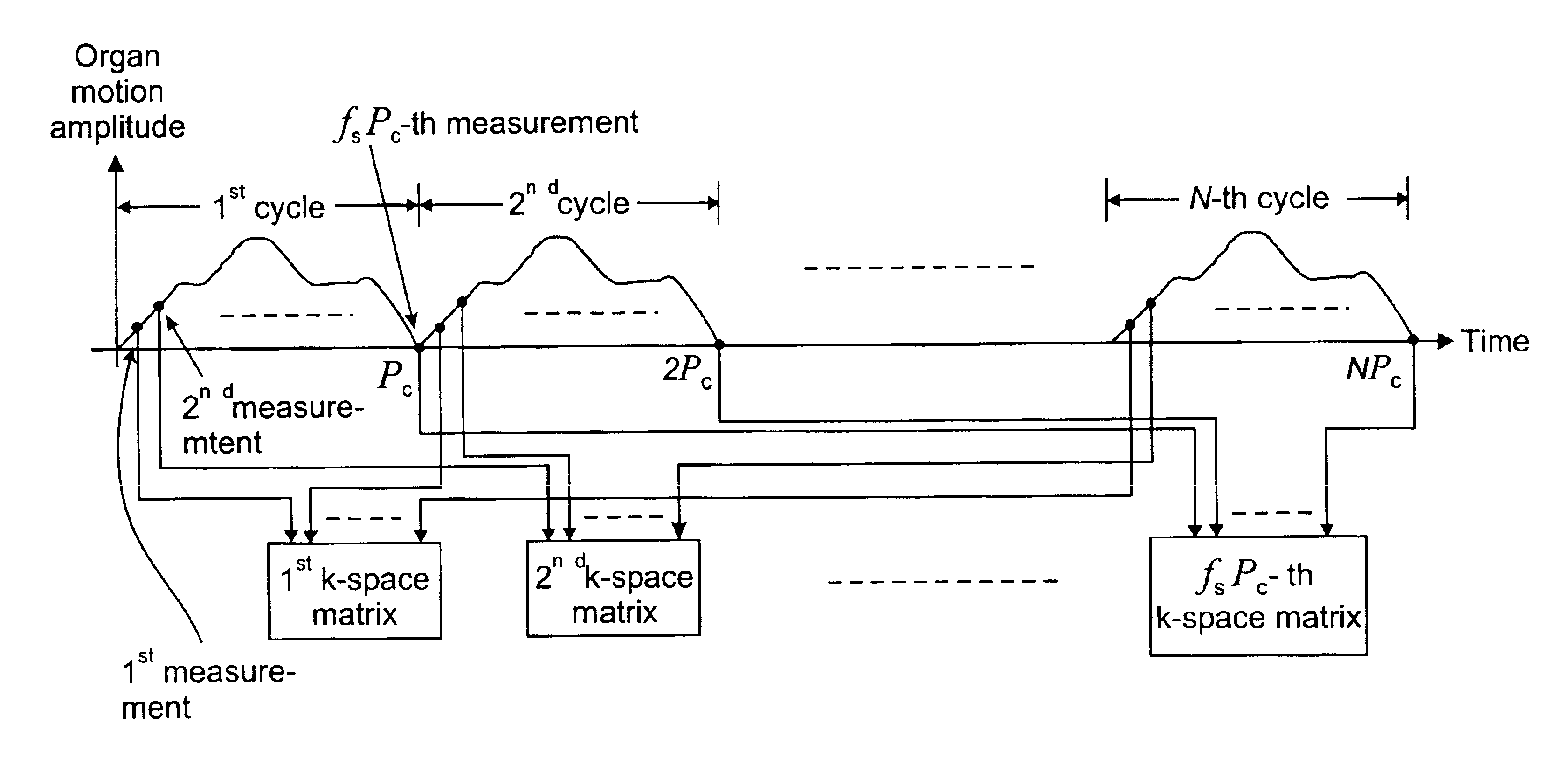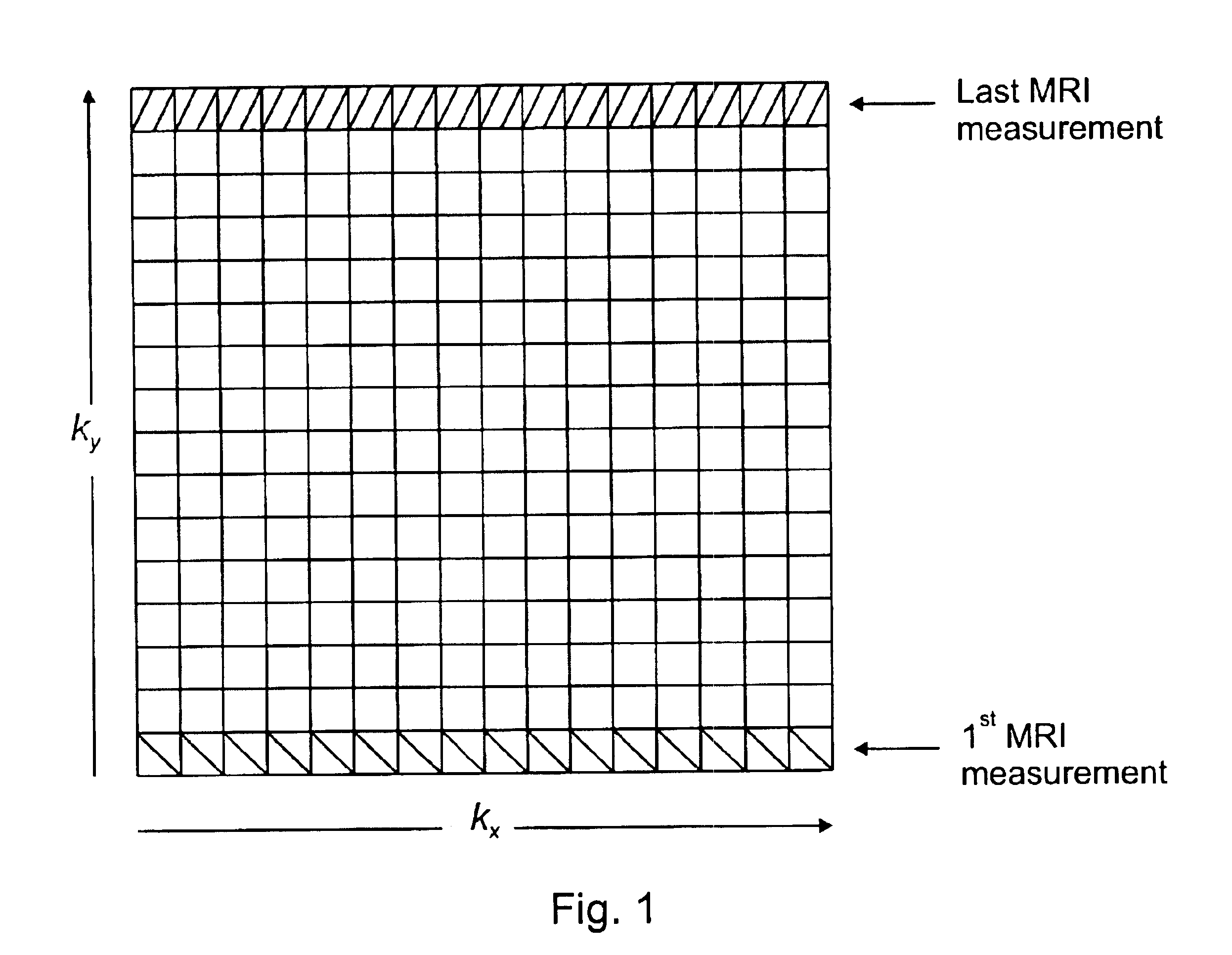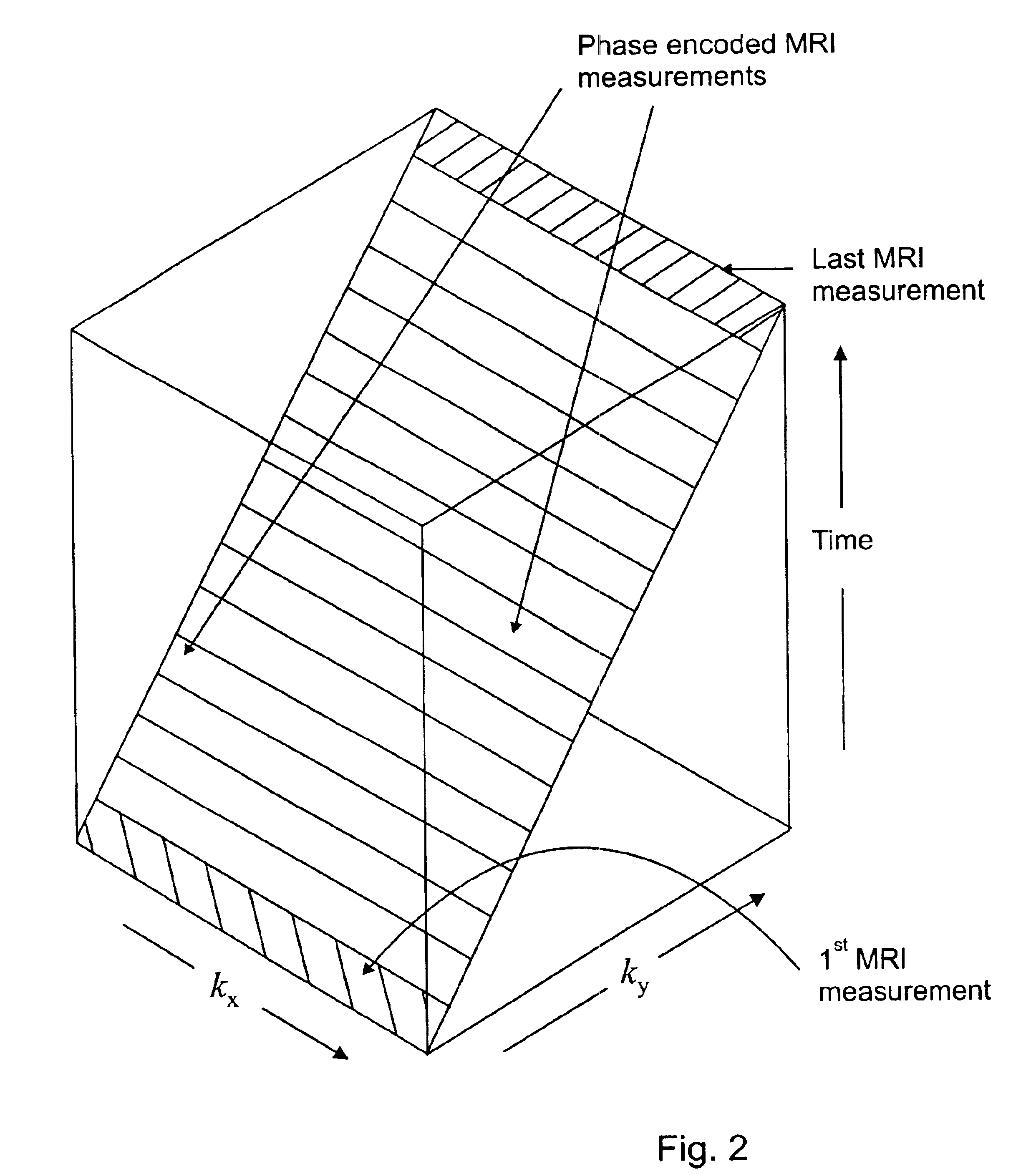Method and device for correcting organ motion artifacts in MRI systems
a technology of organ motion and mri, applied in the field of magnetic resonance imaging, can solve the problems of impede diagnosis, relative long orderly data acquisition time, blurring and replication of reconstructed images,
- Summary
- Abstract
- Description
- Claims
- Application Information
AI Technical Summary
Benefits of technology
Problems solved by technology
Method used
Image
Examples
first embodiment
[0080]Referring to FIG. 11 a simplified flow diagram illustrating the principal processing steps of a method for correcting organ motion according to the invention is shown. A plurality of sets of the MRI measurement data indicative of at least an image of an object are received—box 10. Each set corresponds to one row kx of a k-space matrix of at least a k-space matrix. Upon receipt, for each set of the plurality of sets of the MRI measurements a k-space matrix of the at least a k-space matrix are determined for allocation thereto based on motion data indicative of the motion of the object occurring during acquisition of the plurality of sets of the MRI measurement data—box 12. In a following step, for each set of the plurality of sets of the MRI measurement data a location within the k-space matrix allocated thereto is determined—box 14. Based on the sets of the plurality of sets of the MRI measurement data allocated thereto at least a k-space matrix is generated—box 16. Inverse Fo...
second embodiment
[0082]For example, it is known that the cardiac frequency ƒecg can drift from its initially measured value during the MRI data acquisition process. Thus equation (4) is not satisfied even if the respiratory frequency ƒbreath remains the same. This limitation is overcome by the method for correcting organ motion according to the invention based on the coherent k-space synthesis which allows drifts and mismatches in the above mentioned physiological parameters. Here, instead of assuming a precise cardiac and respiratory frequency, a relative range of the phases of the heart and lung motion is determined as illustrated in FIGS. 14 and 15. Thus, if the heart and lung phases fall within the determined ranges, the measurements collected during these ranges are used for image reconstruction.
[0083]More specifically, the second embodiment of the method for correcting organ motion according to the invention comprises the following processing steps, as shown in the flow diagram of FIG. 16. Dur...
third embodiment
[0099]Referring to FIG. 19 a simplified flow diagram illustrating the principal processing steps of a method for correcting organ motion according to the invention is shown. A plurality of sets of the MRI measurement data indicative of at least an image of an object are received—box 50. Each set corresponds to one row kx of a k-space matrix of at least a k-space matrix. Further, motion data indicative of translational and rotational motion of a patient's head are received—box 52. The motion data are indicative of the patient's head motion during acquisition of the plurality of sets of the MRI measurements. Upon receipt, for each set of the plurality of sets of the MRI measurements a k-space matrix of the at least a k-space matrix is determined for allocation thereto based on the motion data—box 54. In a following step, for each set of the plurality of sets of the MRI measurement data a location within the k-space matrix allocated thereto is determined—box 56. Based on the sets of th...
PUM
 Login to View More
Login to View More Abstract
Description
Claims
Application Information
 Login to View More
Login to View More - R&D
- Intellectual Property
- Life Sciences
- Materials
- Tech Scout
- Unparalleled Data Quality
- Higher Quality Content
- 60% Fewer Hallucinations
Browse by: Latest US Patents, China's latest patents, Technical Efficacy Thesaurus, Application Domain, Technology Topic, Popular Technical Reports.
© 2025 PatSnap. All rights reserved.Legal|Privacy policy|Modern Slavery Act Transparency Statement|Sitemap|About US| Contact US: help@patsnap.com



